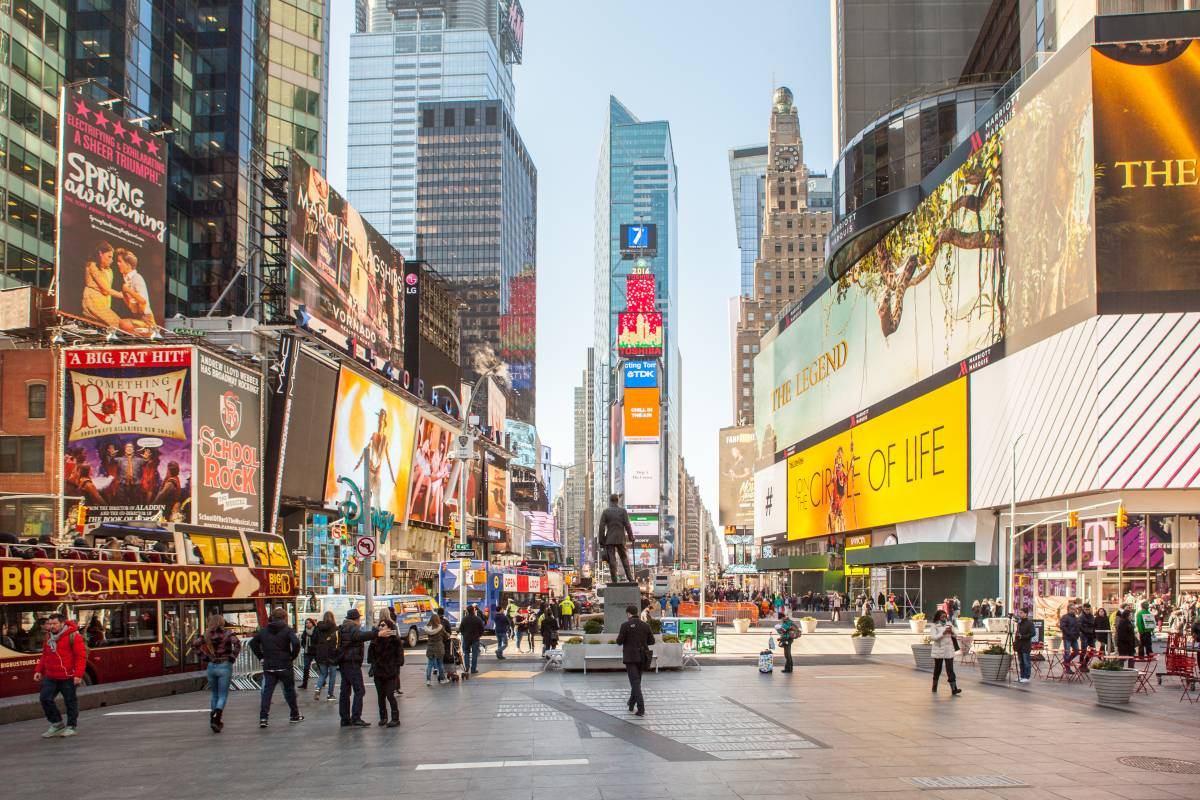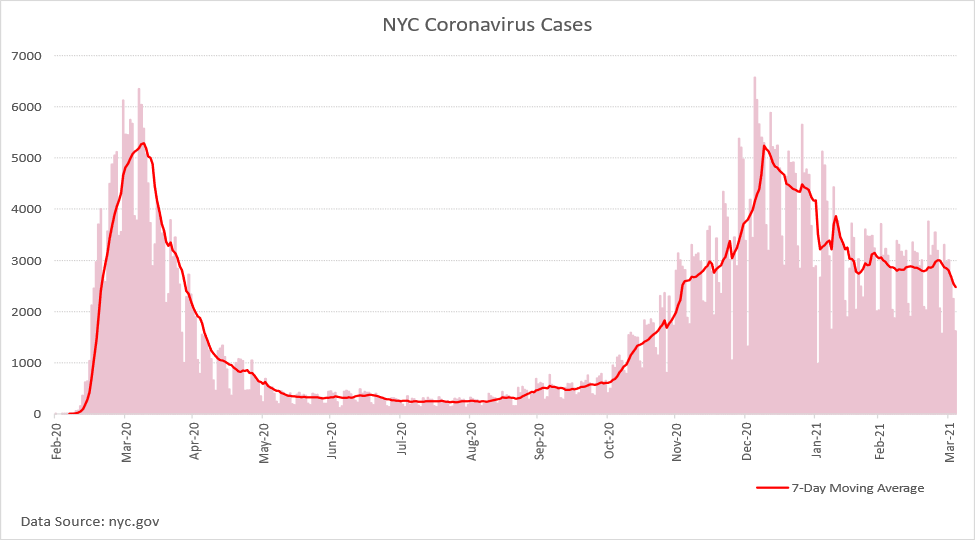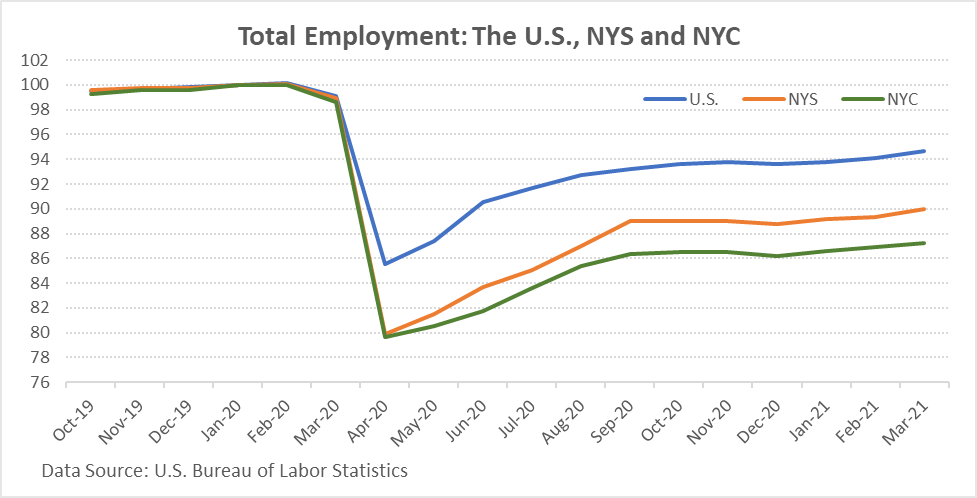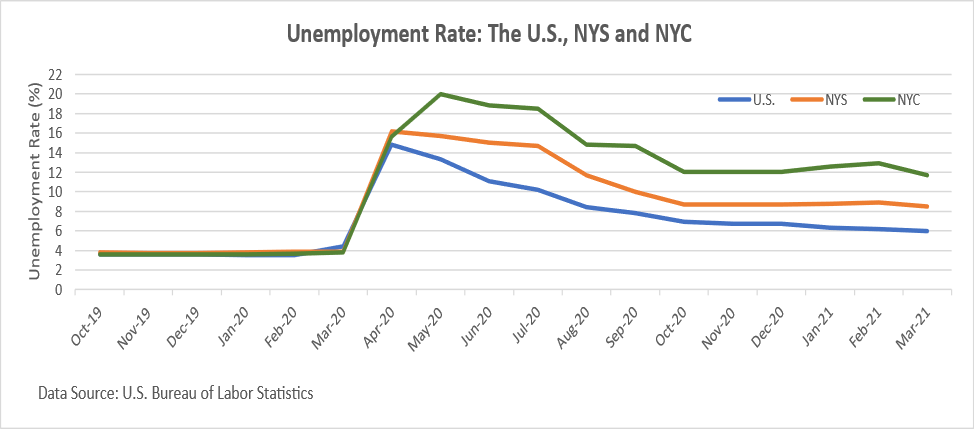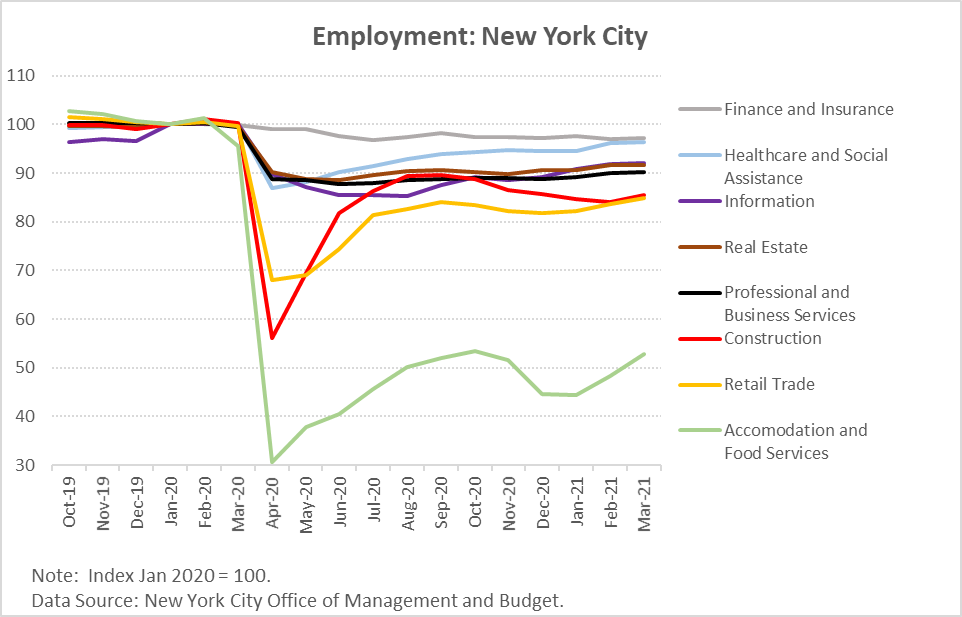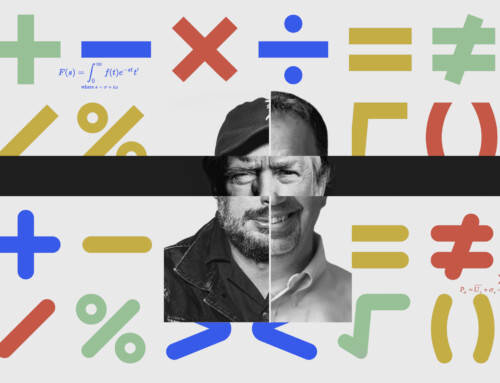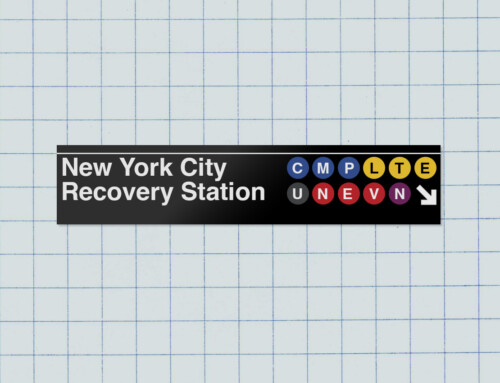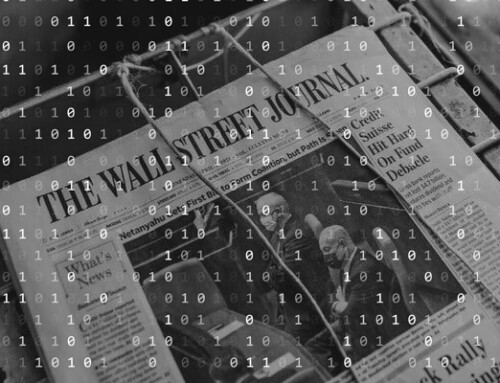By Fadime Demiralp and James Orr
May 17, 2021
Recent employment data for New York show the job recovery from the impacts of the COVID-19 pandemic and the efforts to contain is continuing but still has ways to go. Support for the recovery has come from several unprecedented actions including widespread vaccinations, loosening of restrictions on local activities, massive federal fiscal programs and broad financial support from the Federal Reserve. Still, unemployment remains high across the state and in New York City, and employment in several hard-hit industries is well below pre-pandemic peaks and their national averages. This post presents the latest employment figures to show the extent to which jobs in the state and city economies have recovered, and then discusses the forces that will influence a more complete recovery in New York City.
New COVID-19 Cases
The driving force behind the job declines over the past year in New York as well as the nation has been the spreading COVID-19 virus and the efforts to contain it. Looking at the pattern of new COVID cases in New York City, the first wave hit in February and March of 2020, and a staggering number of hospitalizations and deaths followed. The reaction to the outbreak included the imposition of an economic lockdown for most businesses other than essential services, various travel and other restrictions, social distancing guidelines and work-at-home arrangements. The number of new cases subsided over the summer and the economy gradually began to reopen. However, new cases picked up sharply in the October 2020-January 2021 period, and while still high have been trending down recently. Unfortunately, hospitalizations and deaths associated with these newer cases are up, but they are not severe as in the first wave.
New York Labor Markets in Crisis and Recovery
The economic downturn and recovery in the nation and in the New York State and New York City economies is shown in the chart below which uses an index of employment to track monthly employment levels from the pre-pandemic period to the present. The employment patterns are similar to the pattern of new COVID-19 cases: Job counts in the state and city each declined 20 percent from pre-pandemic levels through April 2020, steeper than the nation and totaling roughly 1.9 million jobs in the state, about 990,000 of these in New York City. A rebound then took hold but flattened out in the fall before resuming during the first quarter of 2021. National employment data mirror these patterns, but the declines were not as deep because New York was one of the early epicenters of the virus outbreak. As of March, of this year about half of the number of jobs lost statewide have been recovered compared to about two-thirds nationwide; about 40 percent of the jobs lost in the city have been recovered, which translates into a shortfall of about 600,000 jobs from pre-pandemic levels.
As jobs fell in New York State and New York City, the number of unemployed New Yorkers rose sharply. In New York City, the unemployment rate peaked at 20 percent last May before trending down. It remained essentially constant from the fall through February 2021, followed by a decline in March to below 12 percent, but is still high and above the rates in both New York State and the nation.
The Dynamics of the Recovery in New York
The employment recovery process from the COVID-19 virus in New York State and New York City is being shaped by a combination of forces. First are the restrictions on person-to-person contacts, individual avoidance of risky interactions, and the widespread implementation of a vaccination program. As noted, new cases are declining in New York City from relatively elevated levels and vaccinations are rising—currently about 3.1 million city residents, 47% of the population over the age of 18, are fully vaccinated; statewide, 50% of the population over the age of 18 are fully vaccinated. New variants of the virus, of course, could setback recent gains and require additional health responses.
Second, health-related efforts are accompanied by the gradual loosening across the state in the restrictions on activities involving person-to-person contact. As examples, most museums are now open with reduced capacity, curfews for certain businesses, including movie theaters and gyms have been lifted while outdoor amusement parks can reopen at 33 percent capacity, and restaurants can open up at 75 percent indoor dining capacity. Job counts, however, remain below pre-pandemic levels. An earlier post noted the hardest-hit industries in New York City were service industries which cater to resident as well as tourists and office workers. The chart below shows the deep declines in the Accommodation and Food Service and Retail industries, though jobs were lost across all industries. The second wave of the virus is seen in the dip in employment at the end of 2020 in these two industries as well as in Construction, though jobs in all three are now on the upswing.
The industries where office work was more typical, and which were able to avoid major job losses by having their workers work-at-home included the Finance and Insurance and Professional and Business Services industries. Healthcare and Social Assistance has shown a solid recovery, edging close to pre-pandemic levels. The Information sector has been trending up for the past nine months, consistent with reports of the expansion of tech jobs. Real estate employment fell about 12 percent, less than the citywide average decline, and started a gradual recovery in November 2020.
Third, about $6 trillion of federal relief has been provided since the start of the pandemic for individuals, businesses, and state and local governments affected by COVID-19, equal to about 25% of GDP. Much of the assistance was contained in three fiscal assistance programs—the CARES Act (March 2020, $2.2 trillion), the COVID-relief package (December 2020, $900 billion, and the American Rescue Plan Act (March 2021, $1.9 trillion). Among the provisions of these Acts is assistance to the healthcare system, including hospitals and healthcare workers; to individuals in the form of direct stimulus payments and expanded unemployment compensation benefits; to businesses, in the form of grants and loans to pay expenses; and to state and local governments to help severely strained budgets.
Among the aid available to New York City, the financial assistance to individuals turned out to be sufficient to offset the large decline in private sources of income over the past year and raise total personal income of city residents. Also, assistance in the American Rescue Plan Act helped close budget gaps for the state and city: The New York State government received about $12 billion in budgetary relief, though it did not obviate a rise in corporate taxes and personal taxes on high-income earners. New York City received about $6 billion in fiscal relief which greatly helped to avoid significant budget gaps. The Metropolitan Transportation Authority (MTA) received significant funding to help offset revenue declines from reduced ridership.
Finally, the recovery has been fueled by the ongoing substantial financial support provided to the broader economy by the Federal Reserve. The Fed moved first by reducing the federal funds target rate to near zero levels, introducing an aggressive quantitative easing plan, and then establishing facilities to ensure the smooth functioning of a wide range of financial markets.
What Direction for New York City?
It is tempting to paint an optimistic scenario for employment in New York City given the progress in vaccinations, the decline in new COVID-19 cases and the pickup in jobs across several industries, including the large Healthcare and Social Assistance industry, the Information industry, and the Retail Trade industry. The stability in recent new claims for unemployment compensation gives support to forecasts that have annual job growth in the city continuing at a reasonably strong pace, though a full recovery is not expected this year. Risks remain, however, and could come from the spread of mutations of the virus, from weaker than expected demand for travel to the city, and from the winding down of federal fiscal support. Also, the viability of companies, particularly smaller companies, and business decisions about locating in the city could change the types of job opportunities in the city even as total employment approaches or surpasses pre-pandemic levels. For example, while several large employers have said their workforces will be returning to the city, the changes in work arrangements that kept many workers at home could become permanent. As we await how these developments will unfold, the expected solid performance of the national economy should continue to support the recovery in New York as would the proposed Federal government plan for an eight-year federal rebuilding of the nation’s infrastructure that, if passed, would help finance an improvement in the public capital stock and give a boost to the economy in the recovery and beyond.

